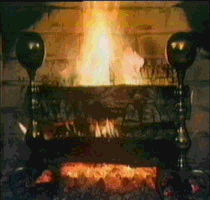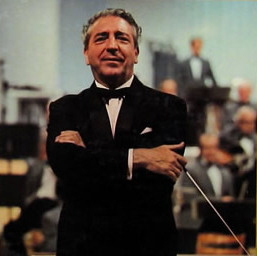
|
| Title: Mantovani: Greensleeves (aka What Child Is This) | |
| The_Yule_Log.com_Message_Board > Message Board Categories > IN THE SPOTLIGHT | Go to subcategory: |
| Author | Content |
|
Christmas Music Guru
|
|
|
Date Posted:10/04/2009 04:46:29Copy HTML
I thought it was only appropriate that after the big announcement last week of the upcoming release on CD of Mantovani’s 1958 Christmas Carols LP (click here), that he should be the very next artist that I feature in my In The Spotlight series. Since I have written so much about the Maestro already, I thought it would also be appropriate (and a grand idea to boot) to post here the original liner notes that were printed on the back of Monty’s aforementioned Christmas Carols LP. The next 512 words perfectly capture the man, who he was, and what he was all about. Some of this I have posted on the message board before, but the vast majority of it is being posted here for the very first time. I think you will find it a fascinating read; and after you’re through, you will have a thorough understanding of who this man was and what made him and his music so great. "Put feeling into your music, my boy," Mantovani's father used to tell him. "Music without feeling is little more than a noise." Mantovani has followed that sound advice throughout a fabulously successful career. Commanded by his baton, his orchestra moves through beautiful, exciting melodies; violins soar and cascade, creating fountains of thrilling sound; familiar themes become transformed into glittering, jeweled patterns. Yet however rich the setting he devises, however sensuous or colorful the harmonies, Mantovani's music is always filled with warmth and emotion. No wonder millions of people all over the world respond to its artistry and brilliance.
It all began in 1951. Mantovani, already popular on both sides of the Atlantic, was asked to record some tunes especially for America. He realized he must do something quite different from the kind of music at which American orchestras excelled, and decided that his best policy was to employ a large number of strings and score for them in a new and exciting manner. His first task was to convince the London Record Company that such a big orchestra would be justified. They agreed, and he made a long-playing record of twelve waltzes. One of these, Charmaine, issued at standard speed, quickly sold over a million copies and won Mantovani a golden disc. It also established him, almost overnight, as one of the most distinctive personalities in the world of light music.
Here now for your listening enjoyment is the Maestro’s resplendent interpretation of "Greensleeves" (aka "What Child Is This"); this was the first holiday song that Monty ever recorded employing his inimitable and now world-famous “Cascading Strings” arrangement technique, which became his signature sound:
 Lawrence F. "Chip" Arcuri
Owner/Webmaster | The Yule Log.com
|
|
|
xmaslover1960
|
Share to:





 #1
#1
|
|
Re:Mantovani: Greensleeves (aka What Child Is This) Date Posted:10/10/2009 04:54:59Copy HTML Mantovani loved "Greensleeves" so much,as he himself put it on his "In Concert" Lp he did for London (His ONLY "Live" Lp,BTW!) that he named his home just that-"Greensleeves"! Michael Boyce
Michael Boyce
|
|
|
Christmas Music Guru
|
Share to:





 #2
#2
|
|
Re:Mantovani: Greensleeves (aka What Child Is This) Date Posted:10/11/2009 02:52:58Copy HTML That's true Michael; Monty so loved his arrangement for Greensleeves that he did indeed name his home after it.  Lawrence F. "Chip" Arcuri
Owner/Webmaster | The Yule Log.com
|










